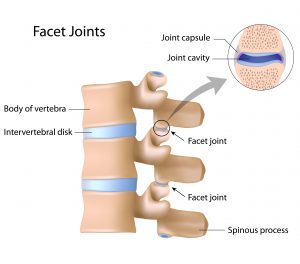IMPROVING LIFE, ONE PATIENT AT A TIME

Radiofrequency Neurotomy
Lower back pain can be a nagging problem that just doesn’t seem to go away. If the pain is caused by damaged nerves around the facet joints, medication and physical therapy may not be enough to bring relief. That may lead your pain doctor to recommend radiofrequency neurotomy, a non-surgical procedure designed to reduce pain over time.
Radiofrequency neurotomy is an outpatient procedure that only requires 20 to 30 minutes to complete, plus an additional 30 minutes or so for recovery. The primary benefit here is the potential to experience significant pain relief for 6 to 12 months.
What does this procedure treat?

We only utilize radiofrequency neurotomy to treat pain caused by facet syndrome, a condition that creates pain radiating directly from the facet joints. These are the flexible joints between individual sections of vertebrae. They work with the discs to allow your back to move in multiple directions.
How does radiofrequency neurotomy work?
Nerves within the facet joints send all sorts of signals to the brain, including pain signals. A radiofrequency neurotomy procedure works by interrupting pain signals. Affected nerves are gradually heated using energy from radio waves. The heat changes the way the nerves work, temporarily preventing them from sending pain signals.
How is the Radiofrequency Neurotomy performed?
A typical radiofrequency neurotomy procedure begins with the patient lying on their stomach. If necessary, medication to help the patient relax is given. It is followed by a local anesthetic to numb the skin and underlying tissue. After allowing the anesthesia to do its thing, the doctor inserts a cannula through the skin and guides it down toward the spine using a fluoroscope. For the record, a cannula is a small tube through which the rest of the procedure can be carried out.
Once the cannula is properly inserted and located, an electrode is guided through it and down to the nerve. A slight burst of energy determines whether or not the doctor has located the correct nerve. If so, radio waves are applied to the nerve through the cannula. It is sometimes necessary for the doctor to treat multiple nerves during a single procedure.
Upon completion, the electrode and cannula are removed. A bandage is applied to the site and the patient is observed for up to 30 minutes before being sent home.
What can patients expect in the following days and weeks?
General soreness is expected at the site of the procedure for at least a day or two afterward. Many patients still experience back pain during this time as well. But gradually, usually within four weeks or so, measurable pain relief is experienced. That relief lasts for between 6 and 12 months, on average. Some patients report pain relief for multiple years.
Radiofrequency neurotomy is intended to treat patients suffering from facet syndrome and for which physical therapy and medications have proven ineffective. Two effective Medial Branch Nerve Blocks will be performed prior for diagnostic purposes. It may or may not be the right procedure for you. To know for sure, make an appointment to see one of our pain specialists and they will talk you through the process.
If radiofrequency neurotomy is not appropriate for your condition, Lone Star Pain Medicine can recommend something that is. We have access to a variety of treatments that can offer you the pain relief you are looking for.
